Coca-Cola Transforms Its Package Design Process with Adobe Dimension
A scarily effective Halloween promotion for Fanta led The Coca-Cola Company to adopt Adobe’s 3D compositing tool, transmogrifying the way its design teams create packaging.
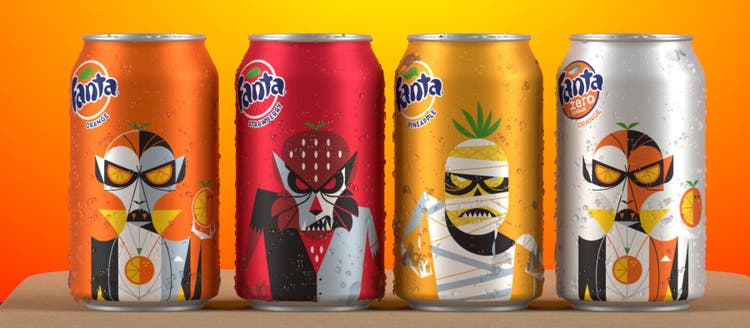
The 2018 Fanta Halloween promotional cans initiated by Fanta NA brand team led by YiWen Lu in collaboration with illustrator, Ty Mattson. Since 2017, Fanta’s parent company, Coca-Cola, has been using Adobe Dimension to visualize packaging designs.
Halloween 2017 was a time of transformation for The Coca-Cola Company. That’s when the firm transmogrified Fanta, its fruit-flavored soft drink, with a series of ghoulish limited-edition can designs created by Israeli illustrator Noma Bar. The makeover not only increased sales of Fanta by 23% during the Halloween period, but transformed the way in which Coca-Cola creates packaging; the firm adopted Adobe’s 3D compositing tool, Adobe Dimension, to enable its graphic designers to create their own 3D visualizations of the cans.
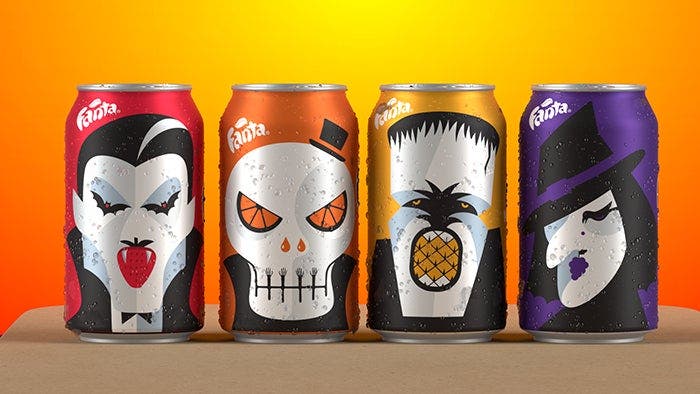
Fanta’s Halloween can designs in 2017, the first year the company used Dimension to visualize product design.
A spookily effective new design workflow** **
In the past, Coca-Cola relied on a traditional prototyping process, with designers creating 2D concepts for packaging, printing them out, then wrapping those print-outs around a physical can or bottle. This workflow had two major drawbacks: the quality of the mock-ups often detracted from that of the designs themselves, and the results were wildly inconsistent.
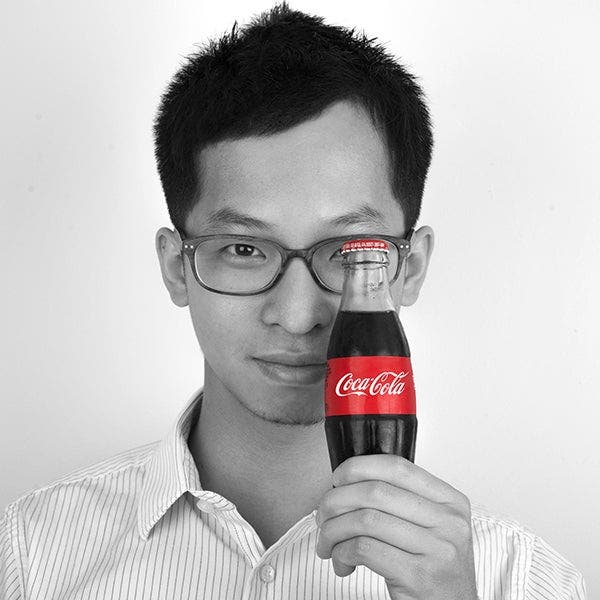
Global 3D Design Lead Benny Lee says that Adobe Dimension has transformed The Coca-Cola Company’s prototyping workflow.
“Coke’s partner agencies and graphic designers all produced work with varying graphic styles, with various tools, and were often unable to print and model those designs with different mockups in a consistent way,” explained Benny Lee, The Coca-Cola Company’s global 3D design lead. “It was frequently a hodgepodge of designs.”
Instead, for the Fanta Halloween campaign, the firm turned to Adobe Dimension. Adobe’s then brand-new 3D compositing tool enabled Coca-Cola’s graphic designers to create accurate visualizations of the can designs, dragging and dropping the digital 2D concepts onto ready-made 3D models. The models were taken from Adobe Stock, Adobe’s online asset library, then designers used Dimension to adjust lighting and backgrounds.
The benefits were immediately apparent. “It was almost impossible to tell that we were looking at composite images and not photographs,” said Benny. “Add to that the ability to view the object from all angles and perspectives, and it was clear the previous workflow was dead.”
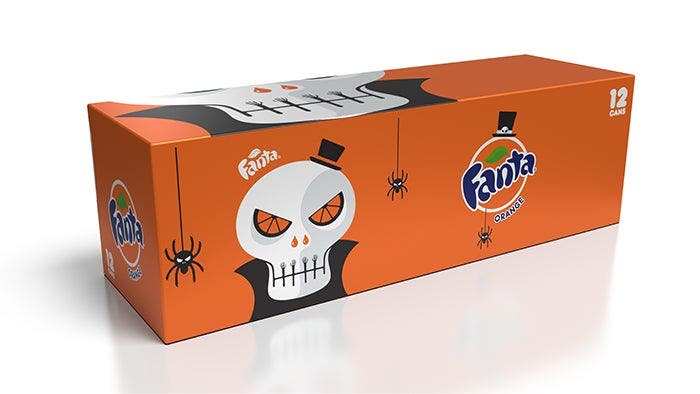
Working digitally enables Coca-Cola’s designers to apply concepts consistently across a range of packaging, without the need to produce physical mockups.
Considerable cost and time savings with the new package design workflow
Coca-Cola has rolled out new Dimension-based workflow throughout the design team. As well as improving the quality and consistency of mockups, working digitally has another major benefit: it saves money. According to Benny, the firm has observed savings of “up to $100,000” per project on visualization work: roughly 33 percent of the budget.
Enabling graphic designers to produce their own 3D visualizations also helps Coke’s teams to respond to management decisions more quickly, and to create content that is “exponentially more useful” further down the product pipeline. By transforming their packaging concepts into a library of 3D assets, designers are creating content that can be reused in physical, online, and interactive marketing, as well as in the production of the cans or bottles themselves.
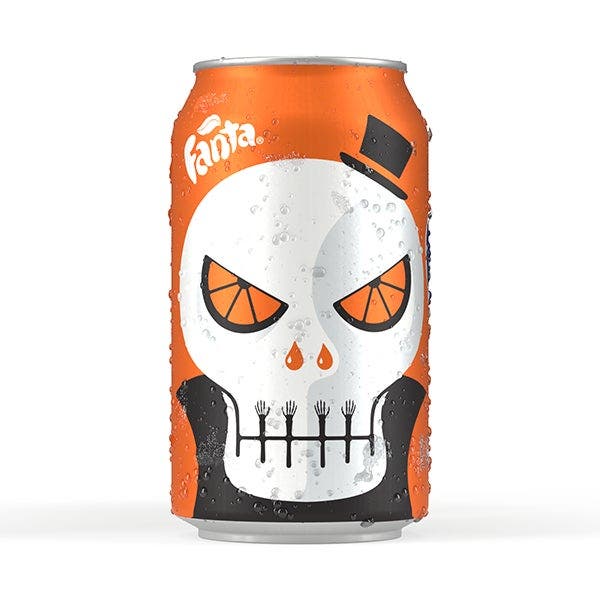
Packaging concepts can be applied to 3D models sourced from libraries like Adobe Stock within Dimension; graphic designers do not need to learn 3D modeling themselves.
Complementing conventional 3D design
Adobe Senior Product Manager Chantal Benson noted that such workflows complement, rather than supplant, traditional 3D design work. “Dimension is in no way trying to replace high-end modeling tools,” she said. “This is the reason behind its close integration with Adobe Stock: Dimension is meant to be a simple way to visualize designs created in Adobe Photoshop and Adobe Illustrator on the surface of 3D models; it is not a 3D modeling application itself.”
Benny agrees, commenting that shifting control of visualization to graphic designers enables Coke to refocus specialist 3D artists – both its own in-house staff, and those of its partner agencies – from simple prototyping towards “bigger projects with a bigger impact.”
“There is no doubt that 3D experts are the most qualified individuals to do renderings [but] there are many other 3D tasks that are higher priorities, like industrial design,” he said. “[In addition] it is not the best use of time to have agencies simply doing renders, and it often results in slower turnaround times when one outsources.”
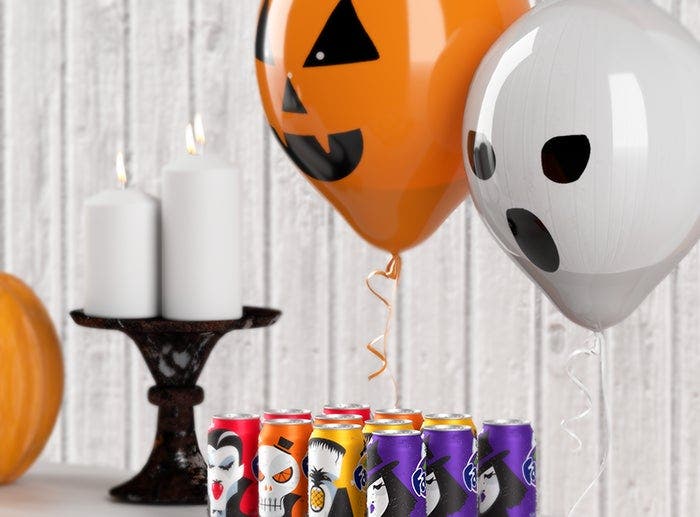
As well as visualizing packing concepts more efficiently, Adobe Dimension enables Coca-Cola’s designers to create marketing images showing the products in context.
A revolution in the way Coke works** **
By enabling graphic designers to take control of the visualization process, Adobe Dimension and Adobe Stock have transformed the way in which Coca-Cola creates new products.
“At Coke, 3D has not only allowed for the maximization of resources but has dramatically increased efficiency and flexibility,” said Benny. “ Graphic design teams have been able to dramatically accelerate their ability to create and test package designs, while generating assets that [can be used] across print, digital, and increasingly, experiential marketing campaigns.
“This democratization of 3D rendering tools has revolutionized how Coke works,” he concluded. “In turn, that has created a better experience for branding teams and consumers alike.”